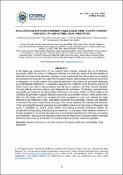Options
Evaluating Electronic Evidence in Malaysian Civil Courts: Current Admissibility and Future Legal Directions
Date Issued
2024
Author(s)
Mohamad Aniq Aiman Alias
Tuan Muhammad Faris Hamzi Tuan Ibrahim
Abstract
In the digital age, various forms of new evidence have emerged, including the use of electronic documents. Within the context of Malaysian civil law, the scope and clarity of the admissibility of electronic documents have expanded, covering criminal, commercial, and various other cases. Against this backdrop, this study aims to analyze the rules governing the admissibility of electronic documents in Malaysian civil courts, explore their practical application, and address the associated challenges and technological implications. A qualitative approach was employed, using document analysis of books, theses, case reports, legal provisions, journal articles, websites, and other relevant materials. The data collected was then analyzed and categorized into subthemes. The findings reveal that there are specific provisions for the admissibility of electronic documents. Section 3 of the Evidence Act 1950 [Act 56] generally recognizes electronic documents as admissible evidence, while Sections 90A, 90B, and 90C further clarify the conditions for their acceptance in civil court. Despite this legal framework, key challenges remain, particularly concerning the authenticity, integrity, and reliability of electronic documents. Given these challenges, this study is significant in evaluating the adequacy of the current legal framework governing the admissibility of electronic documents in Malaysian civil courts. It highlights the need to assess whether the existing provisions sufficiently address the complexities introduced by technological advancements. In conclusion, while electronic evidence is broadly accepted in civil courts, the rapid pace of technological development continues to introduce new challenges. These evolving challenges underscore the importance of ongoing research and legal reforms to ensure that the framework for electronic evidence remains robust and adaptable.
File(s)
Loading...
Name
EVALUATING ELECTRONIC EVIDENCE IN MALAYSIAN CIVIL COURTS.pdf
Size
307.68 KB
Format
Adobe PDF
Checksum
(MD5):61f2f7a54e6ef7e5782bc08030c73422